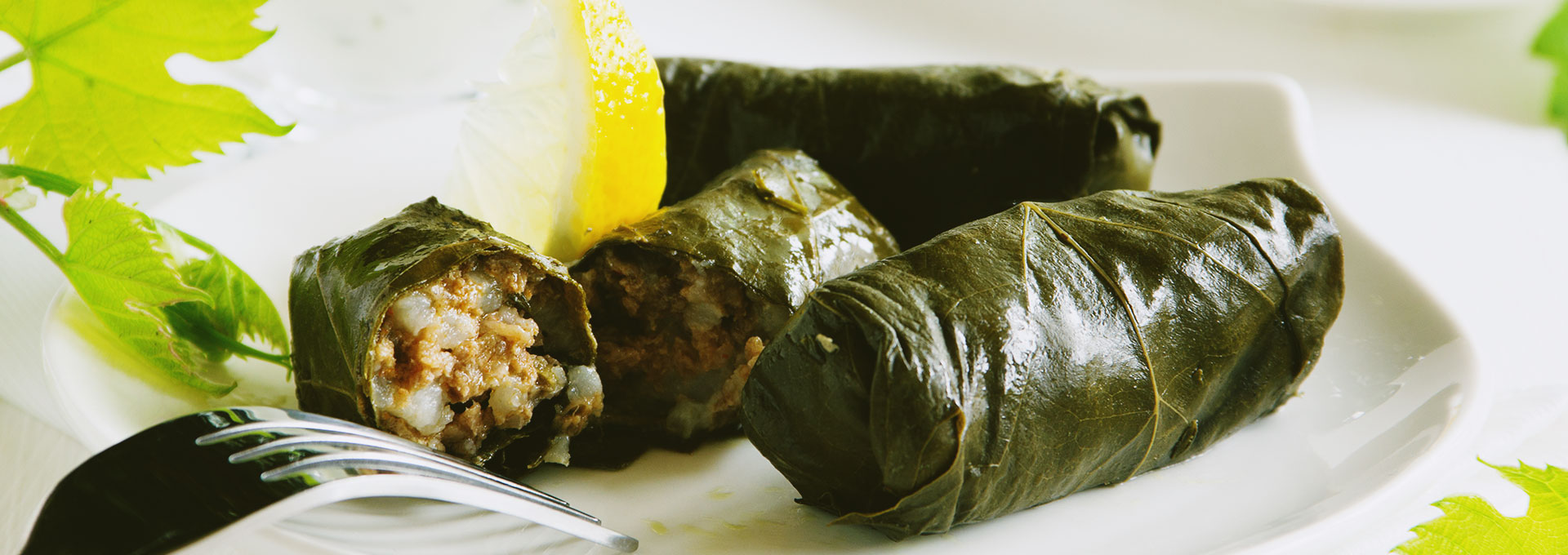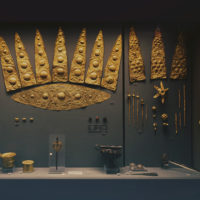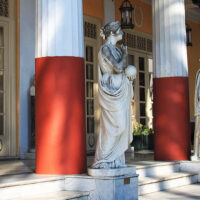Dolmadakia Yalantzi: Greek Stuffed Grape Leaves, our beloved and traditional dish
The first written report to the “dolma” is found back in the greek mythology in the figure of the goddess Hera on the west pediment of the Parthenon, where the goddess is pictured to be secretly eating “dolmadakia” from the pot
by Kristallenia Gavriilidou
cooks our Chef Antonis Theodorakis
“Thria” is the word that the ancient Greeks used to call the “dolmadakia” and prepared them with soft fig leaves. Later, the turkish changed their name to “dolmadakia” or “giaprakia” or “yalantzi”
They are also called “yalanci” that in turkish means “lier” or “fake”. “Fake” dish because of the fact that it is not stuffed with meat
During the Enlightenment, the “dolmadaki” was used as a link to educate people. Adamantios Korais, who was one of the main representatives of the Greek Enlightenment, used to distribute “dolmadakia” to the greek enslaved people hiding inside pieces of paper with translated extracts of well-known European thinkers and theorists. This way, he was trying to encourage and give hope to the enslaved Greeks.
The result of the above was that the “dolma” was declared illegal until the liberation of Greece, where it returned back to its previous prestige.
“Dolmadakia” is a fine “meze” (greek word to describe a small appetizer before or during the main course) and can be either as a side for all of our dishes on the table or as a main course totally delicious and extremely healthy. Their origin is from Asia Minor, where also their alternative name “yalantzi” comes from. They where brought to Greece by the Greek refuges of the coast of Asia Minor. Today, “dolmadakia” are well-known world wide and cooked with many alternatives.
Dolmadakia Yalantzi with dill and mint
How to cook them:
Below the recipe of the Chef Antonis Theodorakis
Ingredients (5 portions)
-
• 60 (approx. 240g) vine leaves – fresh, frozen or vacuum packed in brine
• ½ + ½ cup of olive oil
• 4-5 spring onions – finely chopped (without the leaves)
• 2 cups short grain rice
• ½ bunch of dill – finely chopped
• 1 handful fresh or dried spearmint leaves – rubbed between the palms
• 2 lemons juiced or more to taste
• 2-3 cups vegetable broth or water
• Salt and black pepper freshly cracked to taste
Preparation
Start with sauté spring onions in the first ½ of hot olive oil. Add the rice and keep stirring. Add the rest of the ½ olive oil, spearmint, dill, lemon juice (from 1 lemon), salt and pepper and mix well. Blanch vine leaves in boiling water for a couple of minutes and then refresh in batches of cold water to cool. Place some of the leaves on the bottom of a large casserole.
Place the vine leaves on a flat surface with the ribs facing upwards and the walk and facing towards you. Place a teaspoon of stuffing (varying slightly with the size of the leaf) towards the stalk end of the leaf. Firmly roll the stalk end over leaf, then tuck in the sides and roll up completely. Place seam side down in a large casserole dish. Place close together, in layers, so they don’t unravel.
Place a big dinner plate on top of the dolmades to weigh them down. Pour over the broth or water and remaining olive oil until to cover the plate, season with salt ad pepper.
Cover and cook for about 35 minutes until the rice is cooked.
Once it’s ready, remove the dinner plate and add the rest of the lemon juice.
Serve dolmades with tzatziki or yogurt aside.
















































